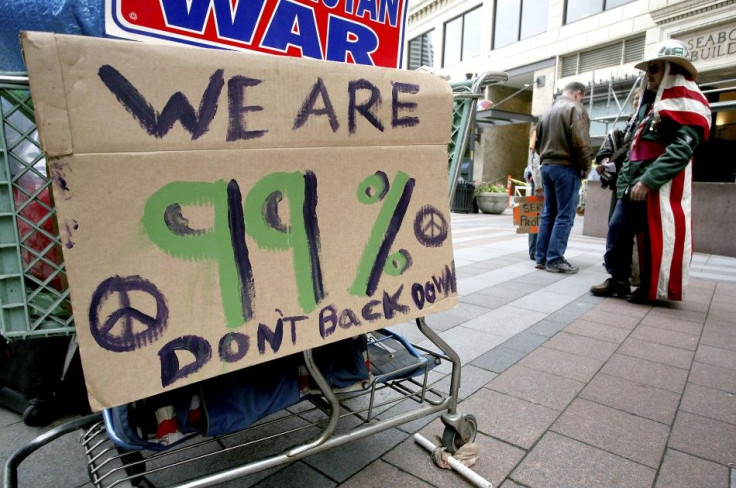CBO: Top 1% Saw Income Nearly Triple in 30 Years, Widening Inequality Gap

The top 1 percent of Americans has seen their household income nearly triple over the last three decades -- something that's increased income inequality, according to research compiled by the Congressional Budget Office.
The nation's richest saw their inflation-adjusted average after-tax household income grow 275 percent between 1979 and 2007. The increase in household income for other groups of Americans was nowhere near the top 1 percent's income growth.
An Unparalleled Rise
The unparalleled rise of the top 1 percent's household income will surely escalate the debate about income inequality and job-creating proposals amid Occupy Wall Street protests that have spread throughout the country and in several other countries.
The CBO report attributes the increased concentration of income in part on the federal government cutting back on cash payments to lower-income Americans, such as Social Security benefits, Medicare and unemployment insurance, while the overall federal tax rate fell.
Composition of federal revenues shifted away from progressive income taxes to less-progressive payroll taxes, the report said.
Factors In Increased Income Inequality
The primary factor, according to the report, is the concentration of income before taxes and government payments -- called market income -- in favor of higher income households who make money through business income and capital gains. Meanwhile, the share of market income from labor has decrease.
The equalizing effect of transfers -- that is, entitlements or government benefits--and taxes on household income was smaller in 2007 than it had been in 1979, the report said.
While these factors caused the top 1 percent to nearly triple its income over between 1979 and 2007, other Americans saw their income grow by a fraction.
For the 19 percent of Americans just below the wealthiest 1 percent, their income grew 65 percent during that period. For the bottom 20 percent of Americans, their income grew 18 percent.
Meanwhile, the three-fifths of Americans that make up the middle of the income scale saw after-tax income grow just under 40 percent.
Other factors for income concentration include compensation of superstars like athletes and musicians, large executive salaries and stock options.
U.S. Rep. Sandy Levin, D-Mich.,ranking member of the tax-writing Ways and Means Committee, said that report is just the latest evidence of the alarming rise in income inequality in this country, arguing that the tax code is doing less to level the playing field than it was in the past.
© Copyright IBTimes 2025. All rights reserved.





















